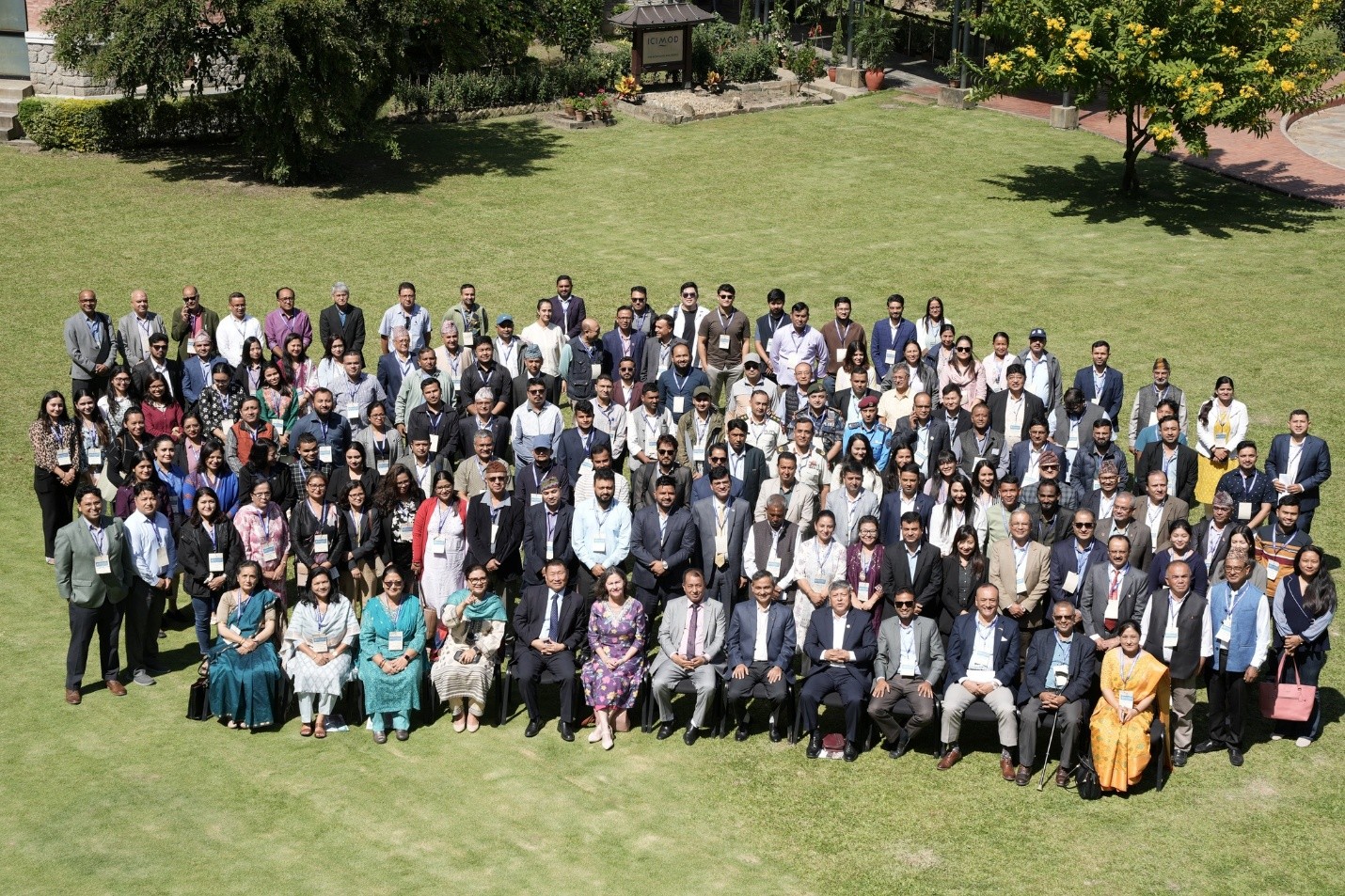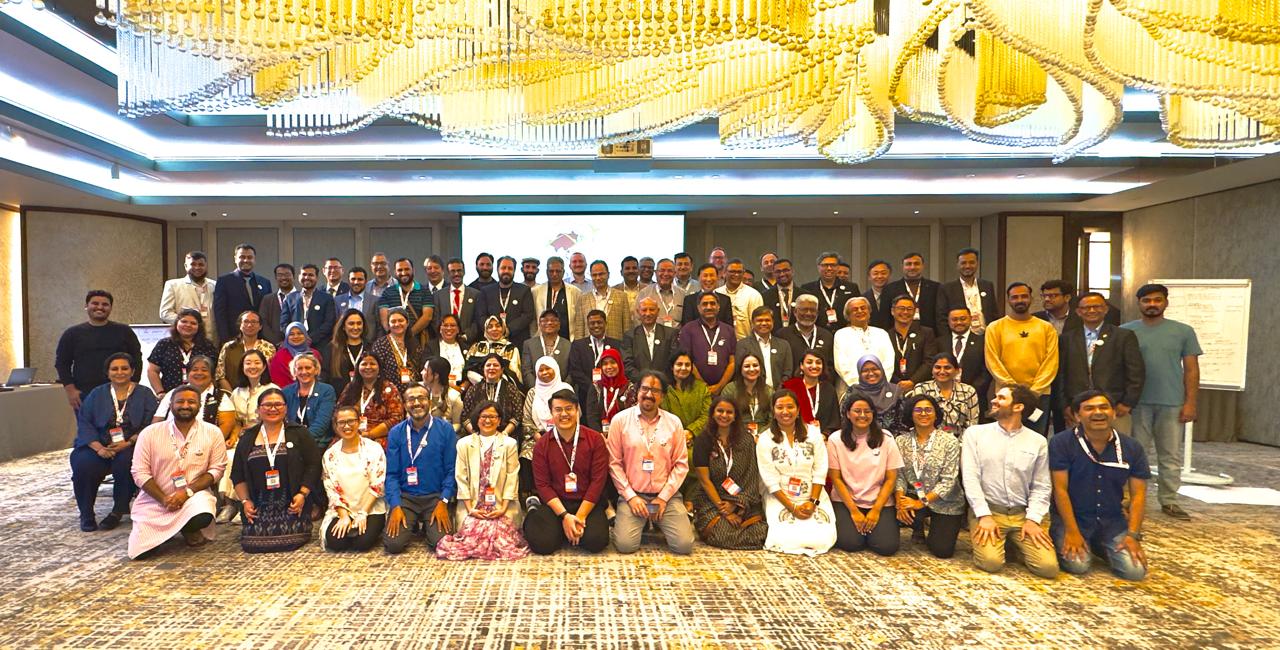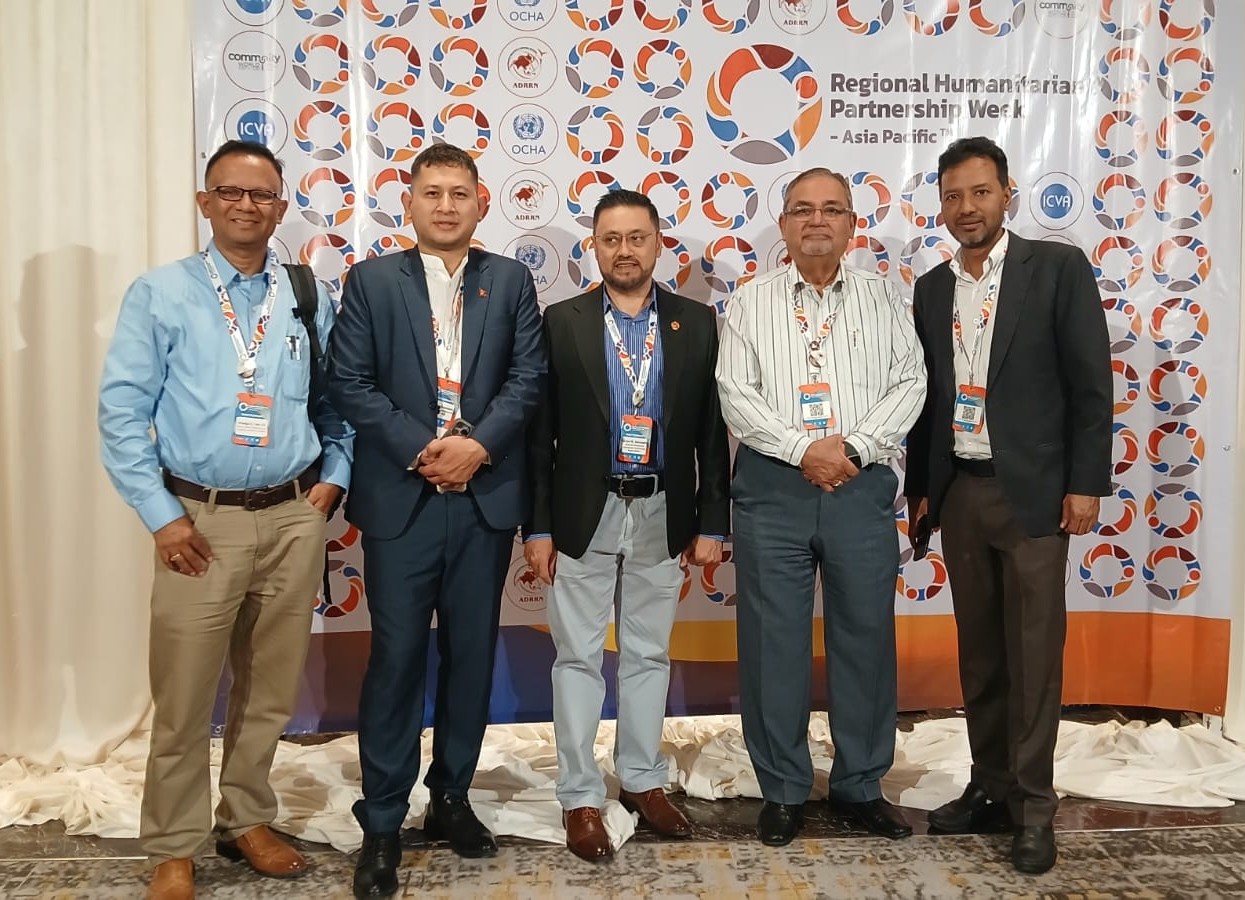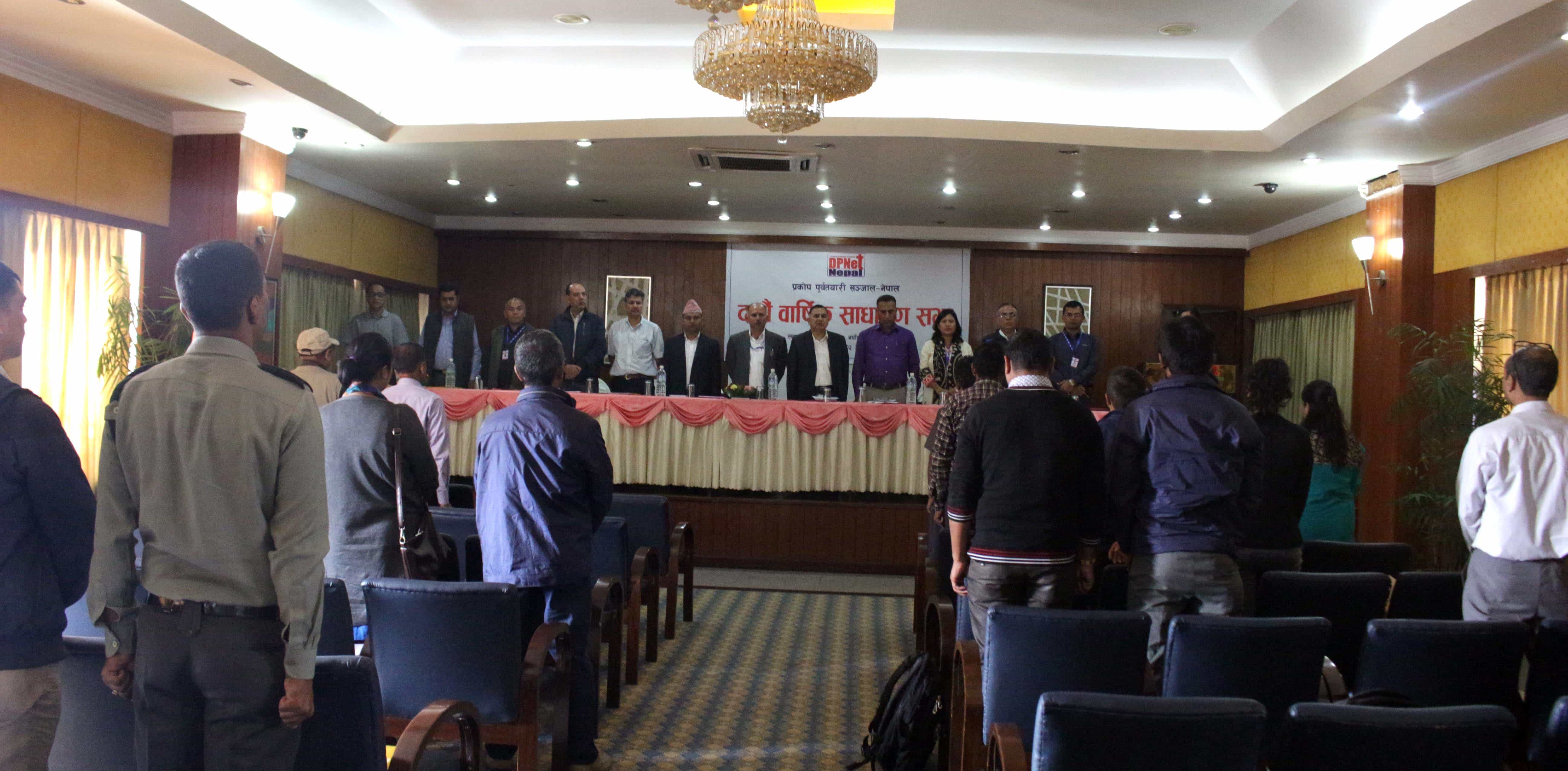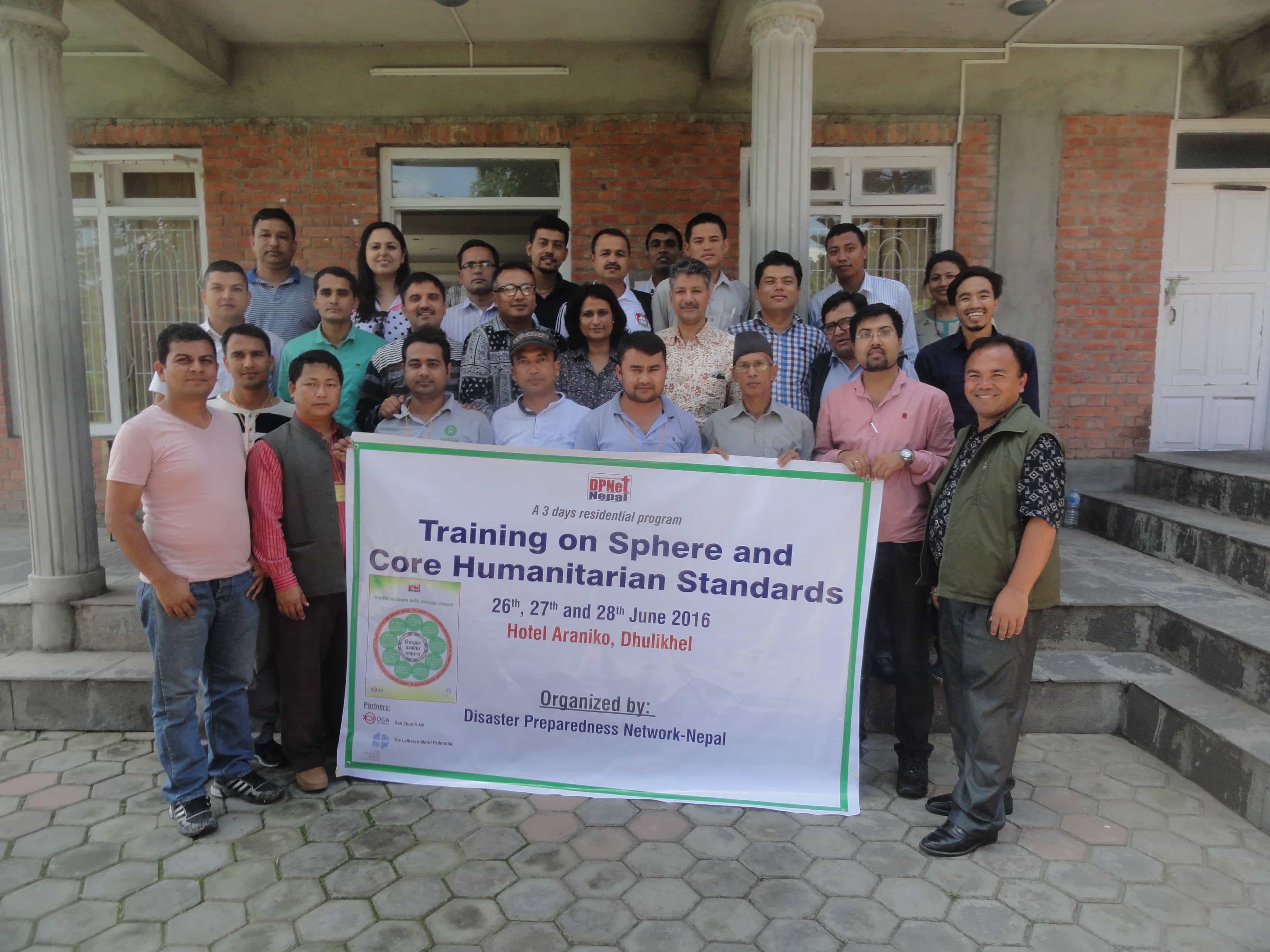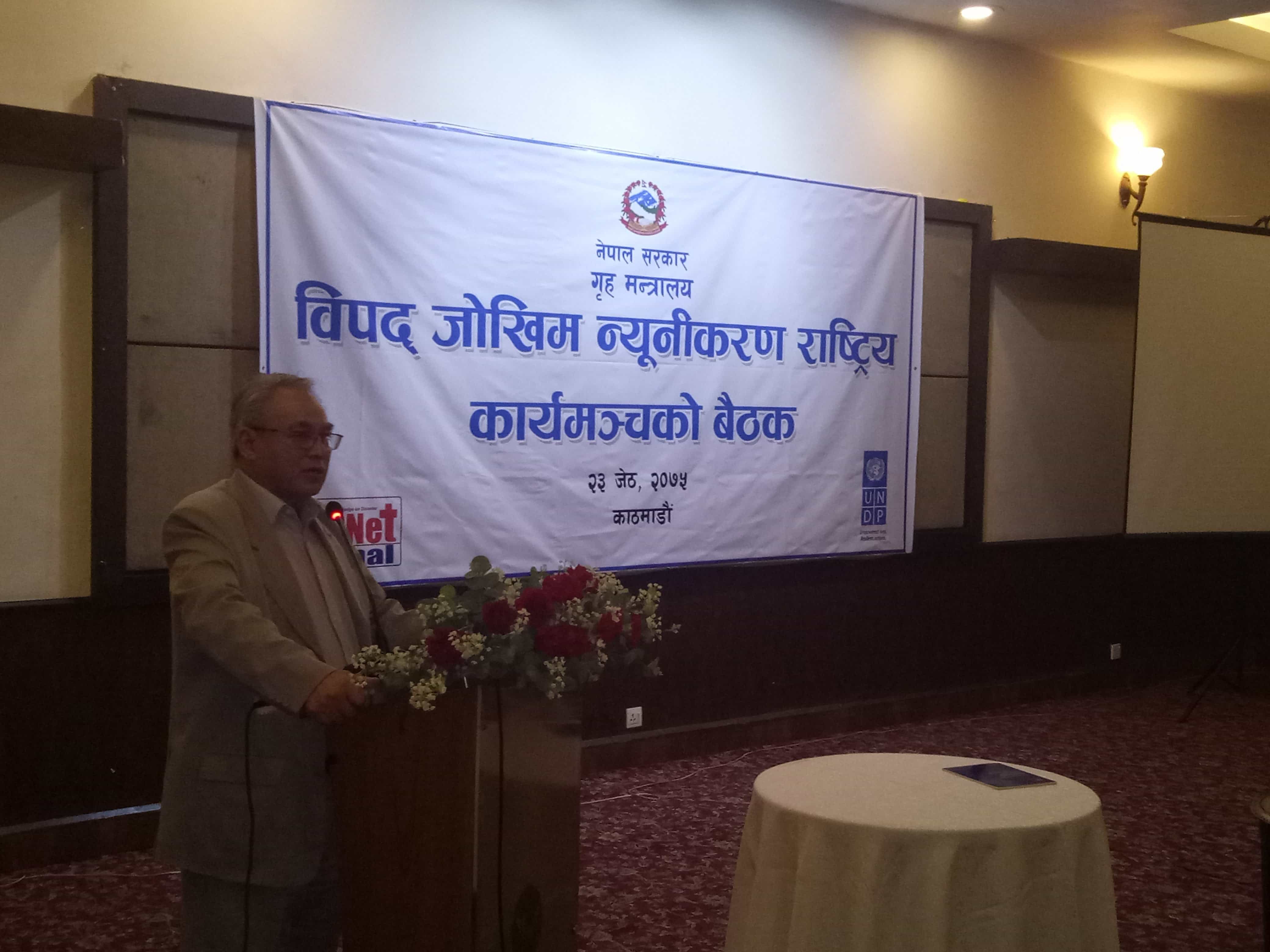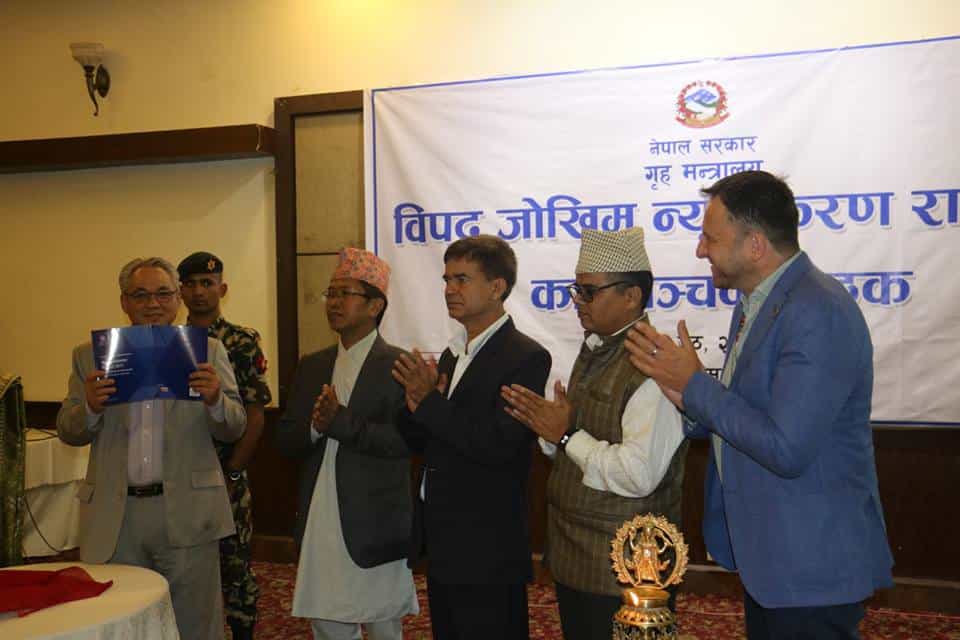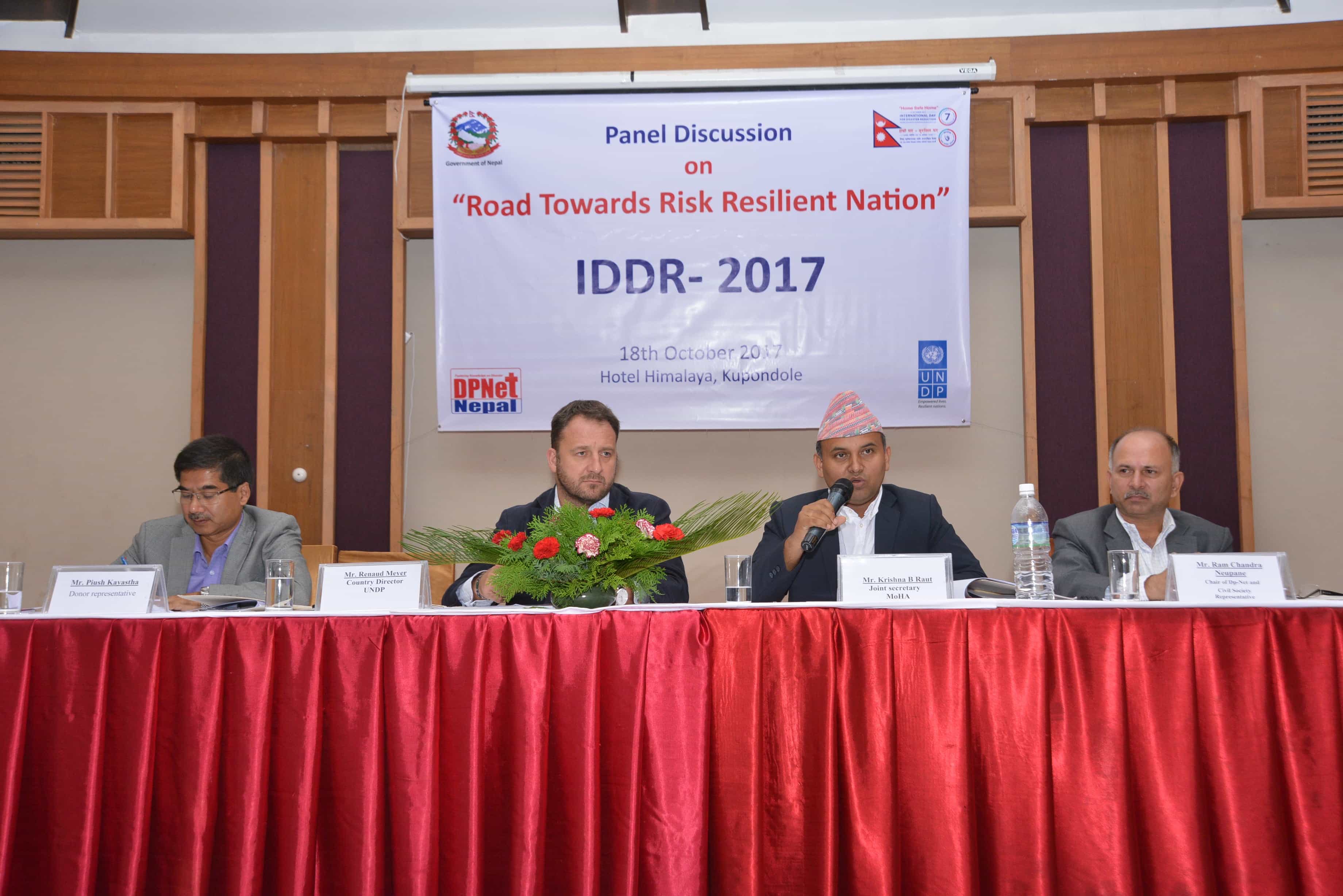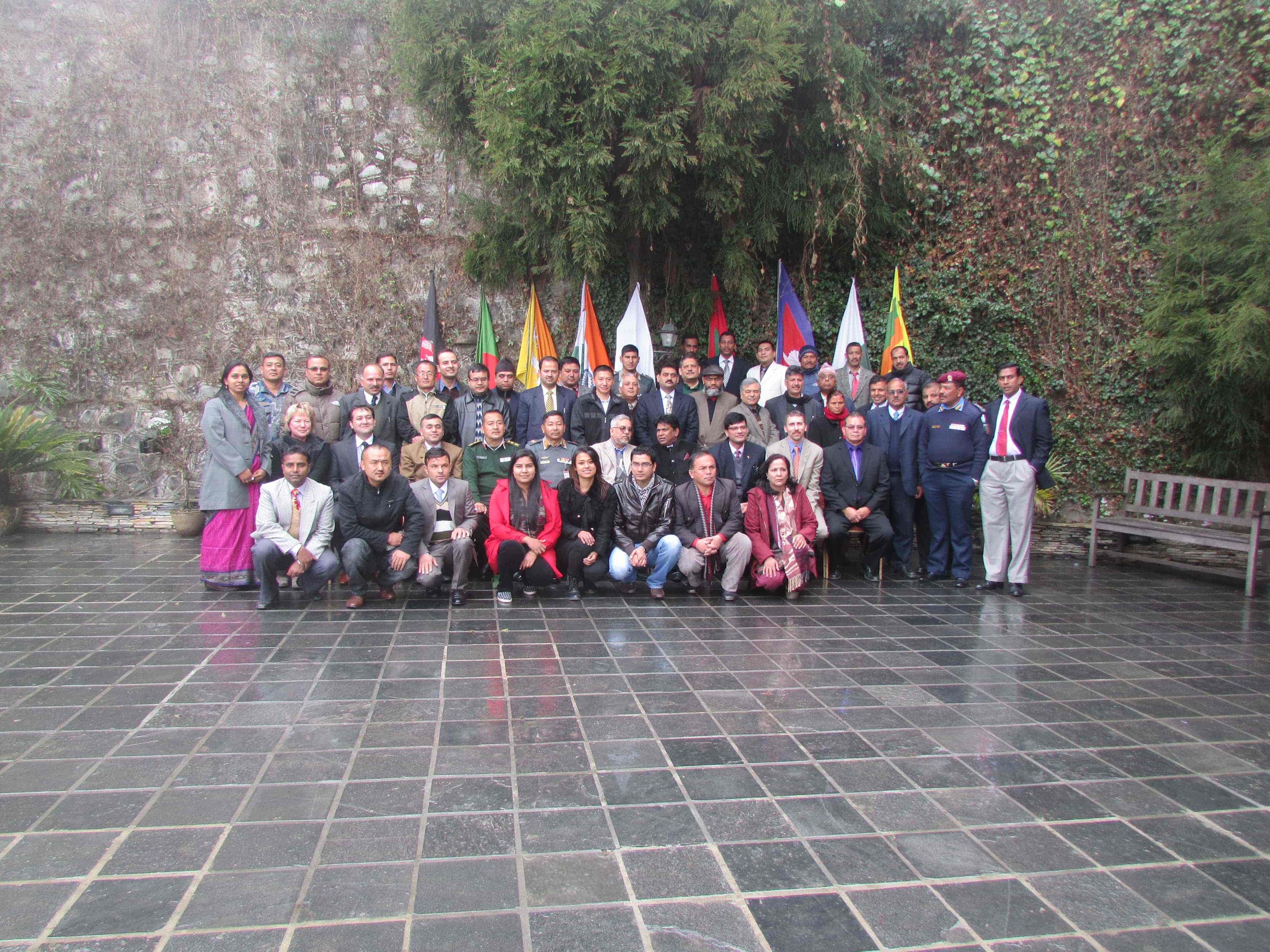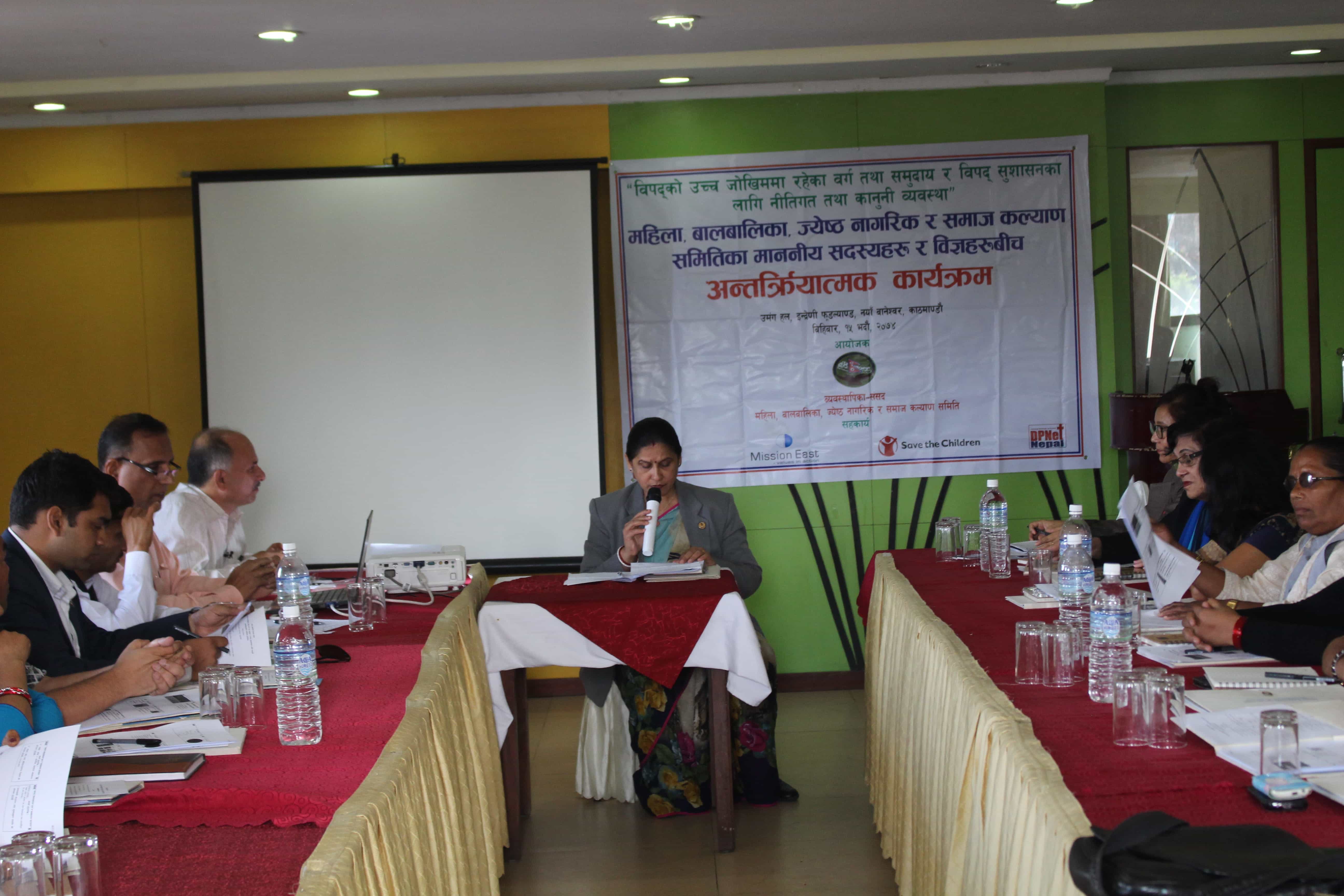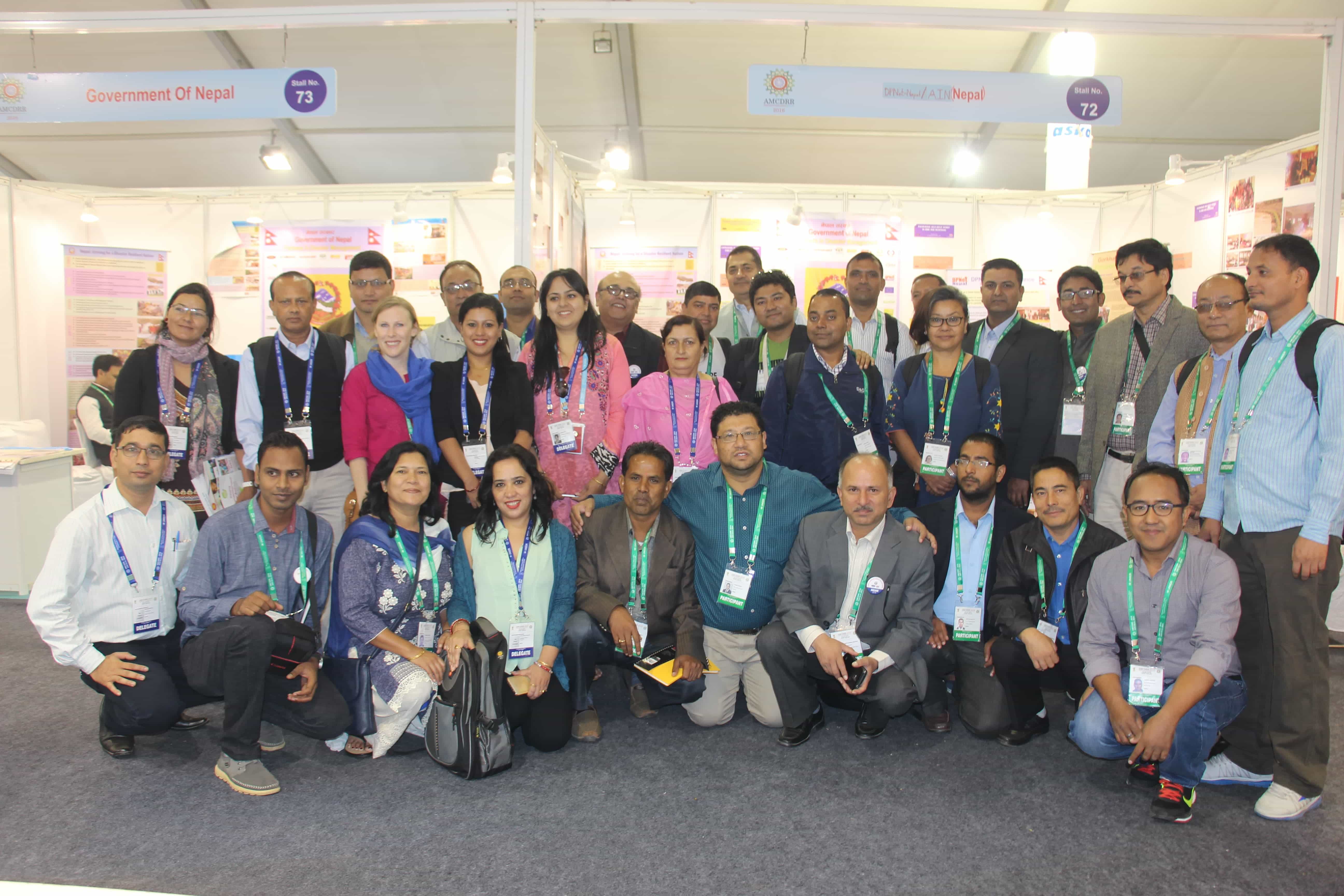Policy Discussion with Government and Development Partners on Shock Responsive Social Protection System (SRSP)

The virtual discussion program entitled “Policy Discussion with Government and Development Partners on Shock Responsive Social Protection System (SRSP)” was coordinated by DPNet-Nepal, organized by Atullya Foundation, SPCSN, and supported by Save the Children and UKaid on 9th August, 2021. The program was chaired by Mr. Surya Bahadur Thapa, Chairperson of DPNet-Nepal. He said that while discussing about DRRM we are not able to take SRSP in an integrated way. So there is a need to initiate such discussion programs from time to time. Data about poor households will help to manage DRM effectively considering the tailored approach in response.
Dr. Raju Thapa, General Secretary of DPNet delivered welcome remarks. He stated that SRSP is a new topic in the context of Nepal and there is a lack of common understanding to take the ownership from concerned stakeholders. He welcomed participants of the program. Altogether 51 participants joined the webinar.
Major Highlights
- Mr. Durga Acharya from SCI highlighted the objectives of the program. He said that the social protection system in Nepal is in good shape, but while there is an emergency situation, there is a need to link the humanitarian response activities with the social protection system. Different agencies are working differently on SRSP, but it is felt to initiate such programs in a systematic way. The major objective of the program was to provide a platform for discussing and building common understanding, identifying gaps, opportunities and developing a way forward for incorporating the nation's shock responsive plan into the social protection system. He said that this program will help to serve as a platform for information exchange, and coordination and alignment of efforts around a shock responsive plan between various government actors and to assess the current status of Shock Responsive Social Protection in Nepal.
- Mr. Baburam Neupane, Ministry of Land Management, Cooperatives and Poverty Alleviation (MoLCPA) gave a presentation on “Status on Poor Household Identification Survey and its Implication on Disaster Management”. He said that the information regarding the poor household identification can be indirectly linked with disaster management. The content of his presentation was more focused on the status of the poor household identification process being undertaken in Nepal. He said that according to the survey, 26 districts are below the poverty line, out of which 391,831 households are identified as poor out of 12,24,417 households. His presentation included the major works conducted by the poor household identification department, list of districts where the program has been completed, underway and yet to be completed, objectives of the poor household identification program-one of the objectives was to provide the benefits of social protection programs to the identified poor households. He also shared about the work done so far, Legal systems regarding this, role of district coordination committee, questionnaire structures for identifying poor households and provisions for poor family identification and identity card distribution guideline 2075.
- Ms. Hira Paudel, Under Secretary from National Disaster Risk Reduction and Management Authority (NDRRMA) presented on “Policy Status of Shock Responsive Social Protection in Nepal''. She briefly shared the introduction, mission, vision and goal of National Disaster Risk Reduction National Policy and National Disaster Risk Reduction Strategic Action Plan 2018-2030, social security and importance of social security during disaster. She stated that though the separate legal document regarding SRSP is not formulated yet, other policy documents spell out the SRSP. She said that the group which requires social protection and their needs should be identified and prioritized. Furthermore, she also shared the list of legal documents relating to DRR&M in Nepal definition of social protection, objectives of social protection program and the need and way forward for SRSP in Nepal. As a part of the way forward she said that there is a need to finalize the National Social Security Framework making it inclusive and disaster responsive. She highlighted the need of the disaster risk financial policy with the clear provision regarding the cash release mechanism, linkage between the social security and disaster related programs and the updated database regarding the people residing in high risk areas and to develop the response plan accordingly. She concluded her presentation stating that the information regarding SRSP should come through a systematic process for supporting the people considering the level of requirement.
- Ms. Shobha Shah, Under Secretary from Nepalgunj Sub-Metropolitan City gave her contextual remarks. She highlighted that poor household identification should be priority based. People with disabilities, old aged people should be provided with special treatment during these kinds of surveys. She added that the survey should be carried simultaneously in all 77 districts to avoid duplication and add more budget to address the issues during the survey. We need to prioritize our activity and rather than identifying poor households on a step by step basis, it’s better to take a holistic approach. There is a need to make 753 local levels responsible for the enumerators, supervisors and data analysis, so that the data could be processed faster. Local levels should take lead and responsibilities to address the issues and keep proper records and the processing from local level to central level should not consume time. Government provides different types of social security allowances to women, senior citizens etc. Providing a social security allowance on a blanket approach may not be appropriate, so the poor household identification card is needed so that the right person gets the right support. There is a need to make the local level more accountable and responsible for social security.
- Mr. Ram K Gurung shared about the recent experiences on SRSP from the field at the local levels. He highlighted the existing practices including that there is no linkage between social protection and DRR He further shared that banking hassles during payment, lack of required workforce in the Local Level, lack of database are some of the challenges during the implementation they are facing. Increased coordination with the financial institution and ward officials and enhanced oversight by the Local Level are some of the measures taken to overcome those challenges. As a part of way forward he shared that the Local Levels should have a cordial relationship with the ward representatives along with the mentorship and guides them in preparing the documents on time to avoid the last moment hustle resulting in delayed distribution of SSA. They should appoint qualified staff to designated posts to work efficiently, regular meetings with palikas and ward officials to identify and address gaps and keep regular coordination to avoid bank errors. SRSP informed program development having the facility of temporary scalability during the disaster is required along with the establishment of robust database management system, strong inter-agency coordination and managing risk financing focusing on disaster response, recover and reconstruction whereas, separate cell in NDRRMA is required to facilitate social protection to be aligned with DRM.
- Mr. Rishi Acharya, Under Secretary from Ministry of Federal Affairs and General Administration (MoFAGA) highlighted the importance of social protection. If reliable data and information is managed, in the leadership of Local Level we can move ahead into SRSP. Stakeholders and development partners need to support Local Level to update the database and make it reliable. He added that the Local government should take lead in updating the profile of information related to disaster and DRR&M. We can provide a national framework and if all local levels can update the data no legal documents will be against the SRSP. He further said that the overall activities of SRSP helps to facilitate the DRRM activities however only on the basis of poor household identification cards, still there is low chance to enter into SRSP. He said the local Government Operation Act, DRR&M Act and its regulation has also some provisions about the SRSP. MoFAGA is working with the high priority to integrate SRSP and it is also facilitating to develop Local Strategy prioritizing the risk transfer mechanism and SRSP. Many Local Levels are formulating disaster preparedness and response plans and the priority is given to integrate SRSP in these plans. On the basis of data while providing social security allowance, we have been providing top-up grants to disaster affected people, however this doesn’t address all concerns so we need to move ahead on a need basis. In the leadership of Local Level, the Federal and Provincial Government, development partners and concerned stakeholders should collaborate for this initiative. He thanked DPNet-Nepal for the opportunity to deliver remarks on contextual issues.
- Ms. Sarsawoti Sapkota from Minisry of Home Affairs (MoHA) highlighted that there are many legal documents regarding DRR&M but we need to focus on activities as well. She added that we need to concentrate on social security, identify the gaps and address the issues.
Closing
Mr. Surya Bahadur Thapa said that we have been doing disaster response in a blanket approach, so there is a need to identify the prioritized groups considering the SRSP for better management. For this purpose, we need a database and detailed information of the people residing in each municipality. He also emphasized on the need for coordination among different agencies for SRSP. He thanked all the presenters and participants for sparing their time and efforts in joining the program. He also thanked Secretariat Staffs for the coordination to organize this program.
